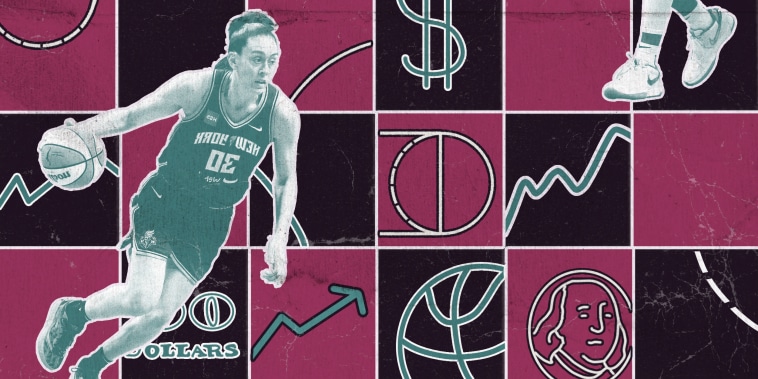Caitlin Clark is a rising star in women’s basketball, making headlines not only for her exceptional skills on the court but also for the compensation she commands as a professional player. The stark difference in salaries between the Women’s National Basketball Association (WNBA) and the National Basketball Association (NBA) has brought to light the undeniable economic reality that exists within these two professional sports leagues. While the NBA continues to dominate in terms of revenue, viewership, and overall popularity, the WNBA struggles to secure the same level of financial support and investment.
One key factor that contributes to the disparity in salaries between the WNBA and the NBA is the difference in revenue generation. The NBA has long been established as a powerhouse in the world of professional sports, with lucrative broadcasting deals, sponsorship agreements, and merchandise sales contributing to its massive revenue stream. In contrast, the WNBA has faced challenges in attracting the same level of corporate sponsorship and media coverage, leading to significantly lower revenues for the league as a whole.
Another factor that plays a significant role in the wage gap between the WNBA and the NBA is the issue of gender inequality that persists within the realm of sports. Women athletes, including those in the WNBA, often face discrimination and marginalization in terms of pay, opportunities, and resources compared to their male counterparts. This systemic bias not only impacts the salaries of female athletes but also hinders their chances of achieving the same level of recognition and success as male athletes.
The disparity in salaries between the WNBA and the NBA is also reflective of broader societal norms and attitudes towards gender, work, and value. The undervaluation of women’s sports, including basketball, perpetuates the belief that female athletes are somehow less deserving of fair compensation and recognition for their talents and hard work. This pervasive mindset not only affects the financial well-being of women athletes but also reinforces harmful stereotypes and biases that undermine their achievements and contributions to the world of sports.
As fans, supporters, and stakeholders in the world of sports, it is crucial for us to recognize and challenge the economic realities that perpetuate inequality and injustice within professional sports leagues like the WNBA and the NBA. By advocating for gender equity, fair pay, and greater investment in women’s sports, we can help create a more inclusive and equitable playing field for athletes like Caitlin Clark and others who continue to defy the odds and excel in their respective sports despite the obstacles they face.
In conclusion, Caitlin Clark’s pro salary serves as a stark reminder of the economic disparities that exist between the WNBA and the NBA, highlighting the need for greater support, recognition, and investment in women’s sports. By addressing the root causes of gender inequality, bias, and undervaluation that underpin these wage gaps, we can help level the playing field for female athletes and ensure that they receive the respect, opportunities, and compensation they rightfully deserve.
